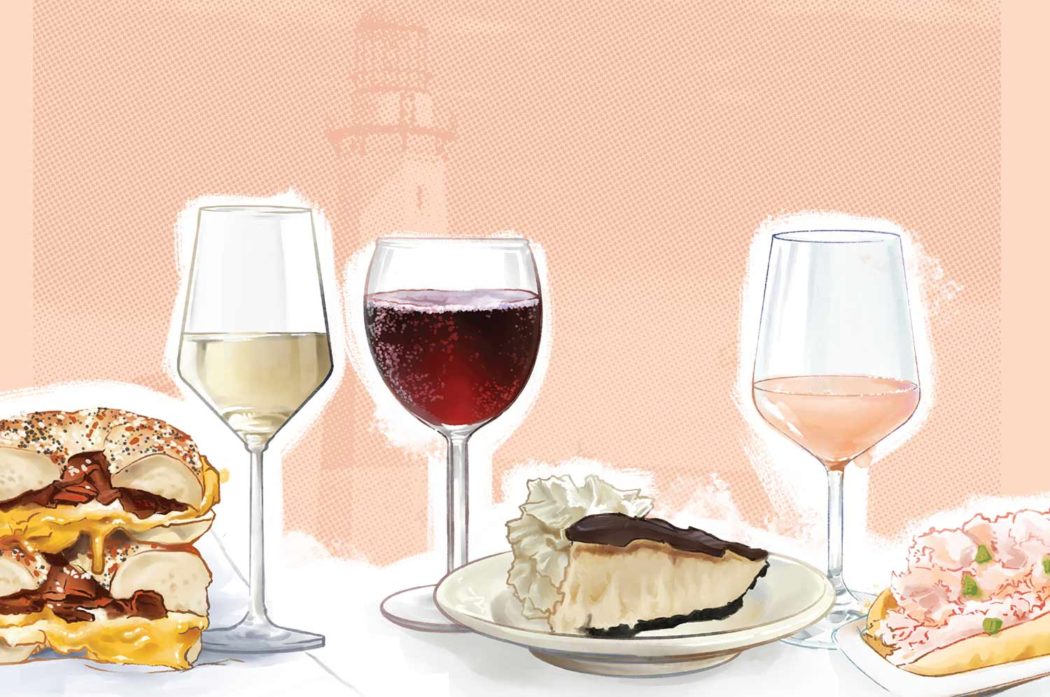Big Macs & Burgundy author Vanessa Price takes it home to the East End
Sometimes it might seem as if the tonier parts of the East End and Montauk live in two different worlds despite being next-door neighbors. You might think of fancy wine dinners with tiny appetizers when you think of “the Hamptons” and you might think of a cold beer with a lobster roll after a day on the water in Montauk—but wine and lobster rolls are better bedfellows than you’d guess. Unlikely pairings expert and author of Big Macs & Burgundy, Vanessa Price, takes us through town and down the bottle with a few not even close to bad pairings inspired by our hometown.
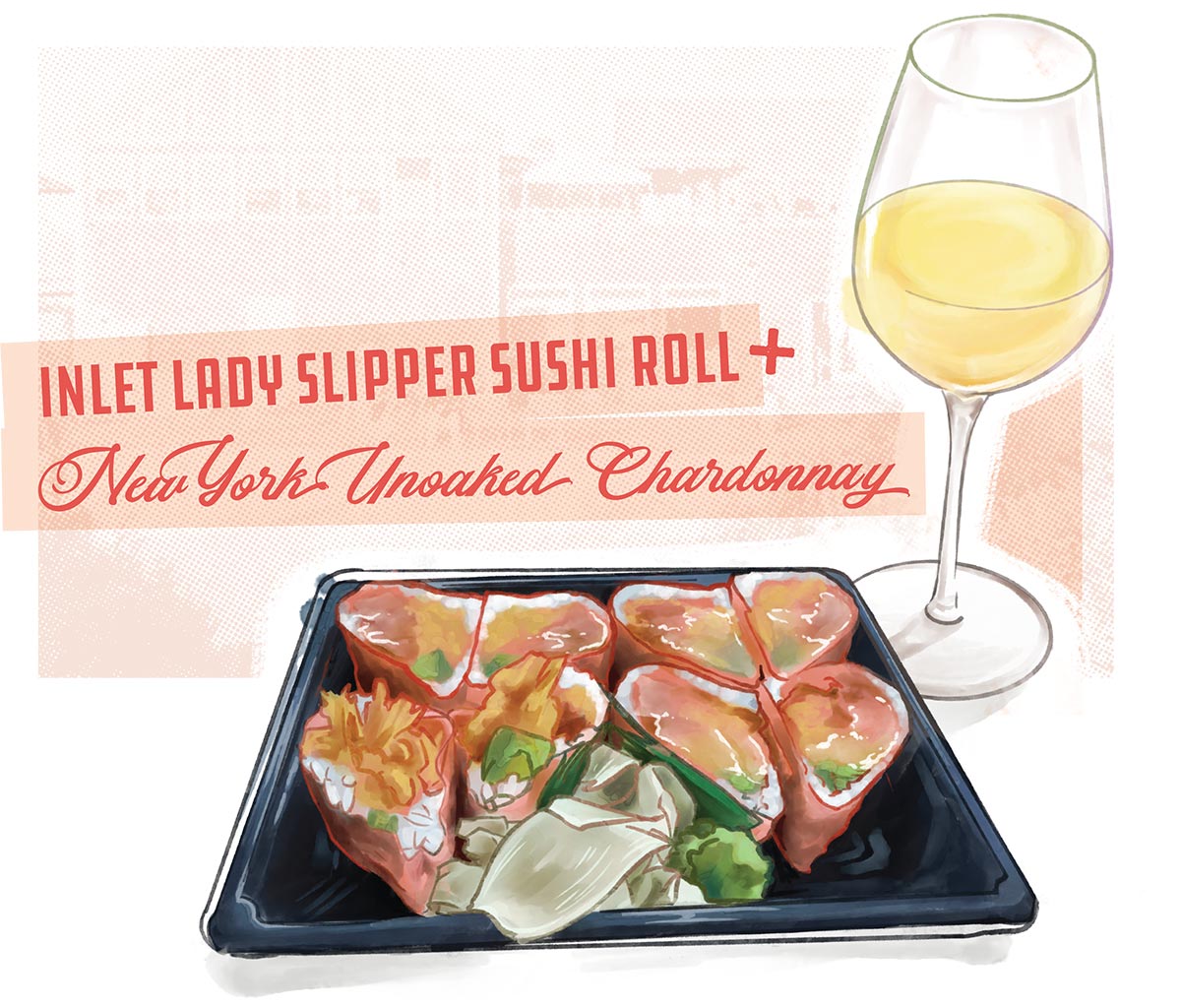
Soy and umami are behind much of Japanese cuisine, some of which is sushi that can be fried or raw and everything in between. Sake is an obvious choice, but there are many great vinous options if you stick with wines that are lighter in texture and body with more acidity and plenty of herbal and savory notes. The Lady Slipper at Inlet is no exception, with the shrimp tempura, spicy tuna, and avocado wrapped in soy paper and sweet chili sauce which is a symphonic melody for the mouth. And when my order involves a Lady Slipper roll or two (which is always), North Fork unoaked Chardonnay always comes next.
Chardonnay can be made in a variety of styles from super light and crisp to full rich and dense. For good sushi, we want to go the lighter, fresher route. These versions are always pure and vibrant, with a bursting expression of minerality.
That’s a delight for fried sushi rolls. The wine’s crispness has a way with the flavor and texture of the fried shrimp and soy paper. The minerality is nicely complemented by the seaweed and sweet chili sauce, while its monster acid gets an assist from the vinegared rice. The often lower alcohol content of North Fork whites and the lack of additional body from the absence of commonly used oak also ensures the lightness of the sushi doesn’t get blown away.

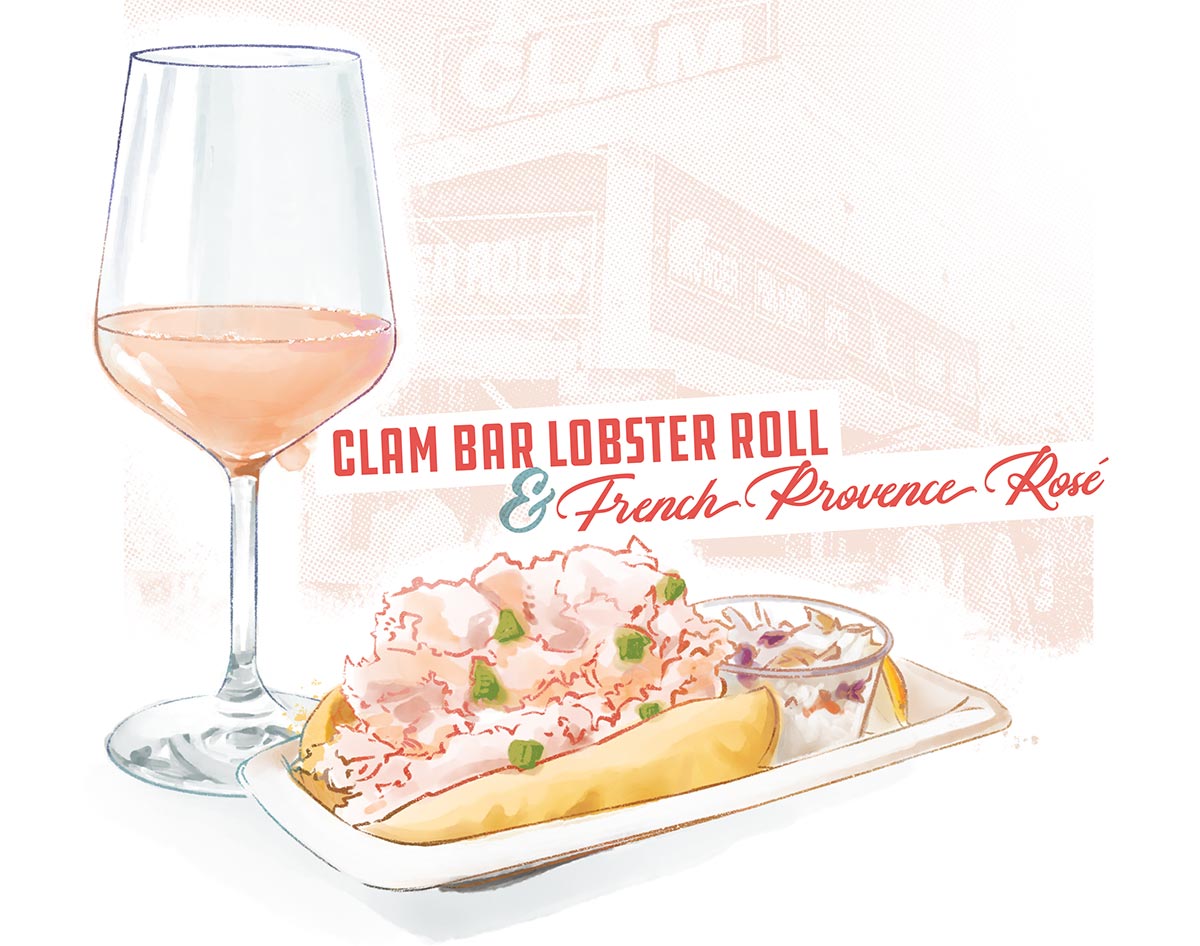
Lobster rolls and Bandol are glitz-on-glam. And there is nothing more titillating on a summer day, or any day really, than someone offering me a glass of pink Bandol with a warm, buttery lobster roll from The Clam Bar in their other hand. What makes these rosés unique from other dry French pinks is that they’re primarily based on a grape called Mourvèdre, which makes full-bodied, deeply-hued wines with fresh-tilled earthiness and botanical intensities ranging from anise seed to fennel.
As you know, if you get to the end of beach season and haven’t had a lobster roll, you’ve failed summer. But there’s plenty of time to redeem the rest of your year. Done right, you want a potato bun that’s lightly seared and soft to the touch, with a helping of lobster that’s warm and fresh and painted in butter. Bandol Rosés have the strength to take on any briny undercurrents and the delicacy to cradle the mildly supple flesh, but it’s their cool spiciness and lean, tropical-fruit spine that give the roll that pink pincher of flavor it needs to walk on water.

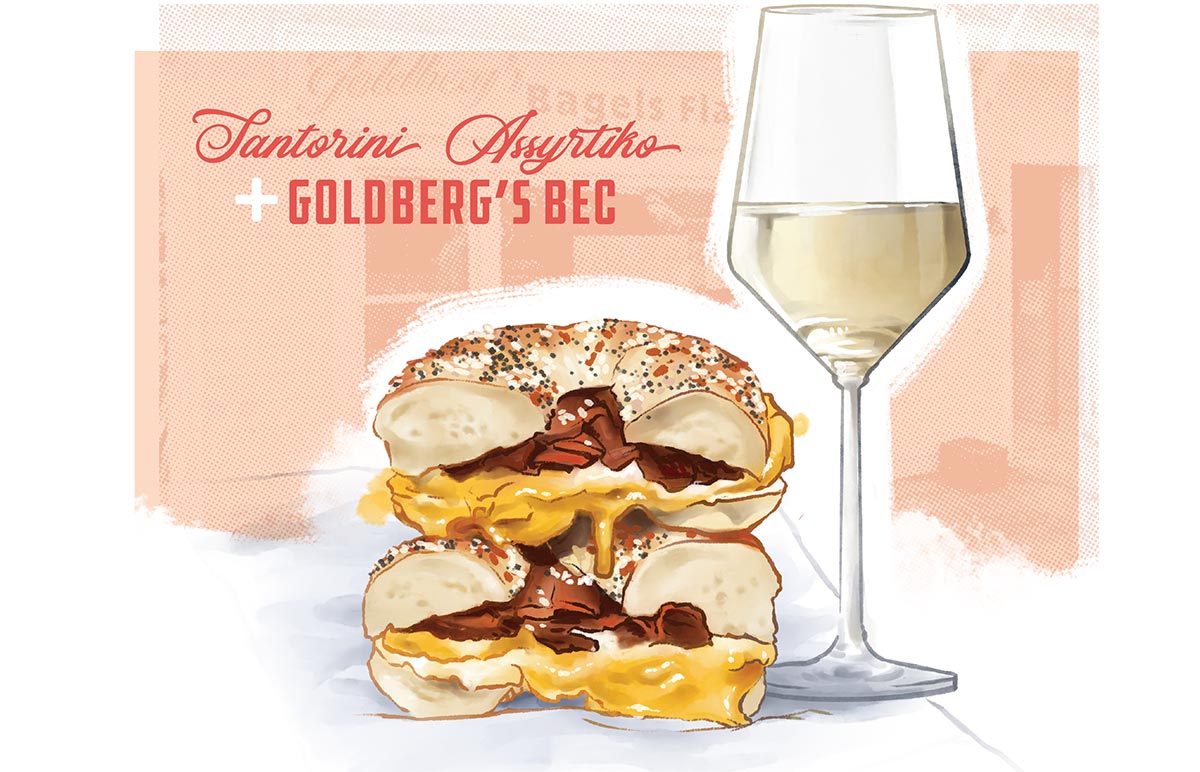
Perhaps the greatest aspect of living in New York is our superior breakfast sandwiches. It’s a fact that New York’s bodegas make the best bacon-egg-and-cheeses in the world, and while some people order their BECs as morning fuel, just as many of us order them at the end of a long night. For the East End of New York, there is no place more highly regarded for their breakfast sandwich than Goldberg’s. From hamlet to hamlet and fork to fork, every town has its own beloved outlet of this family-owned outpost. And there’s no reason these holy sandwiches can’t also be a thing you pair with wine, especially if that wine is Santorini Assyrtiko.
Along with mildly important things like democracy and philosophy, the Greeks are responsible for bringing wine to
the modern world. Santorini, one of the country’s better-known islands, produces white wines from a grape called Assyrtiko (a-sEER-tee-ko) which is as beautiful as the land where it’s made.
Assyrtiko makes a naturally rich wine with a round, full body that wraps itself around a BEC as snugly as the foil. Santorini’s version has the ripe citrus and fruit to cut the oozy cheese, while the bacon finds a co-conspirator in the saline minerality that’s a classic characteristic of these wines.

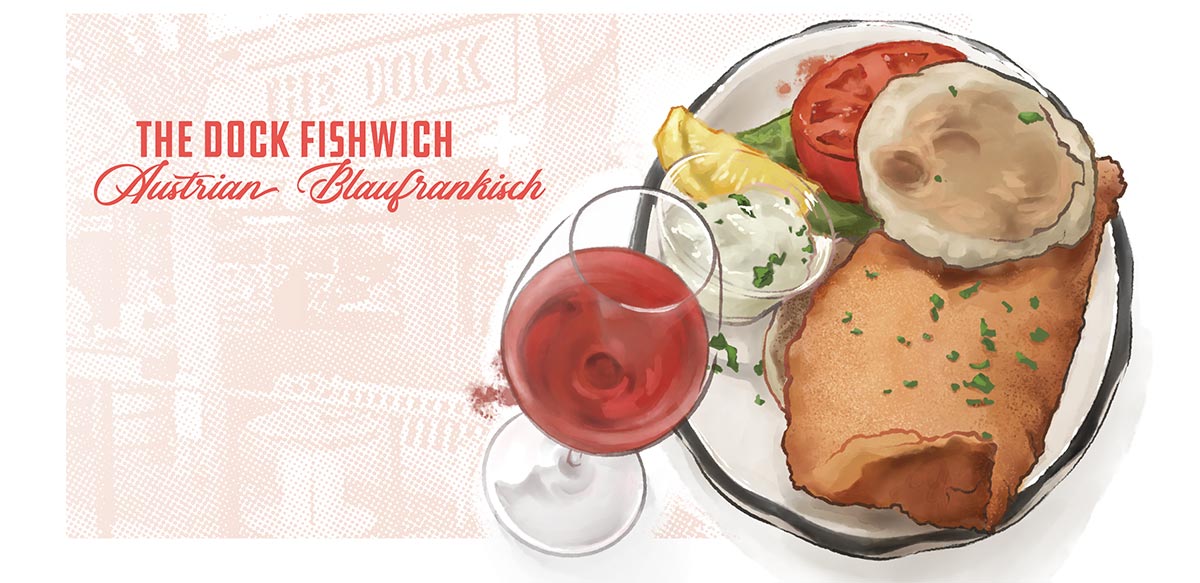
I still remember the first time I was introduced to The Dock. The bizarrity of the decor. The oddly satisfying nature of the largely rude and indifferent service. The simply printed menu that was eternally dwarfed by the endless specials board. And then there’s the moment I had that first bite of the fishwich, when the chewy English muffin gave way to the crisply fried white fish and a warm ooze of creamy tartar snuck through. It’s a simple pleasure known only to those unfairly maligned mavericks who choose the fishwich. And it is for these intrepid souls that I proffer a red wine—not a white—to pair with their menu-staple favorite. The assumption that white is only for fish and red is only for meat is outdated cockypot, and it’s time for that rule to be broken.
For fried fish, you’ll want a lighter red, chilled in the fridge as if it were white. And for the fishwich in particular, a tarty little number from Austria called Blaufränkisch cannot be bested. The grape itself produces a wide range of wine styles, but for our purposes, it’s the lighter and fresher medium-bodied iterations that work best, where the tannins aren’t so intense as to overpower our crispy fish, yet sturdy enough to echo the rich (and 100% necessary) tartar sauce. And one of the hallmarks of Blaufränkisch is the spiciness it exhibits in spades, which is just the kind of kick that lands so beautifully in a pillowy steamed muffin.

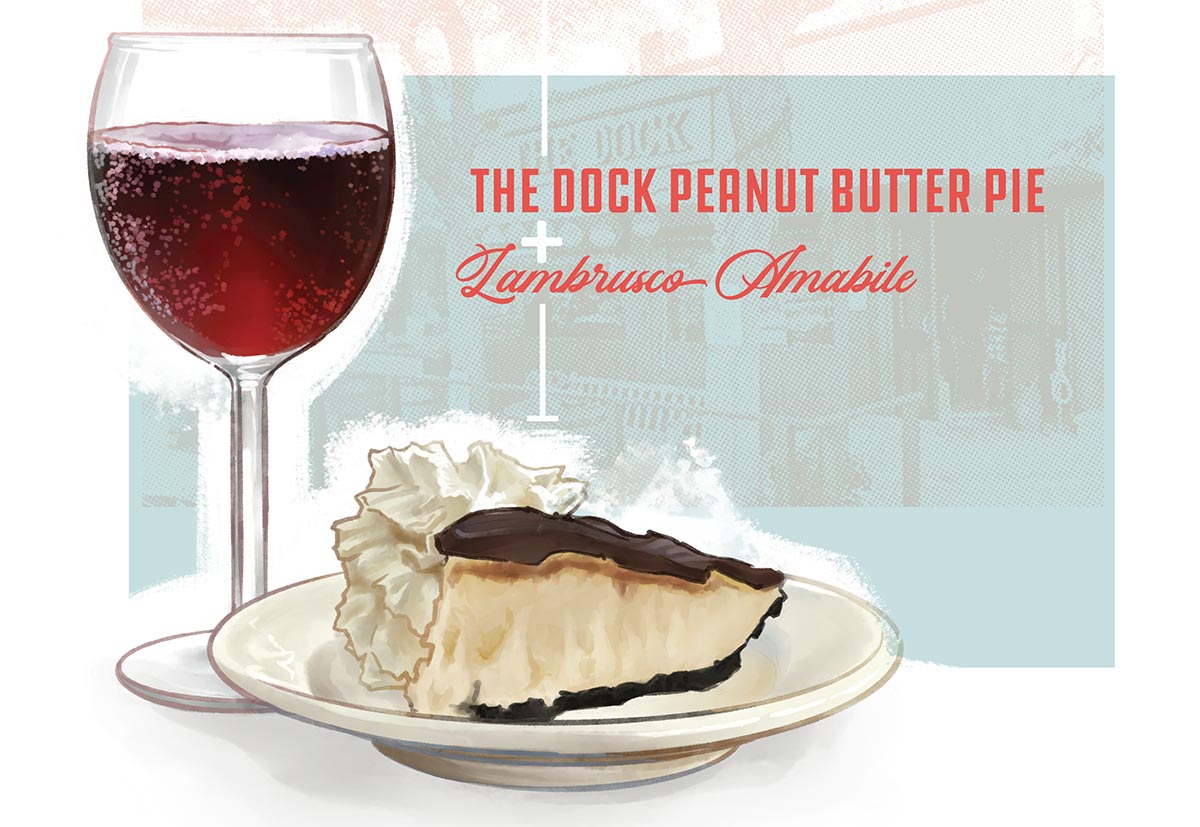
Whether you go for the super-smooth, no-stir peanut butter or the organic, pricey stir-it-yourself kind— the salty-sweet staple of whipped peanut butter mixed with anything sweet tastes better with Lambrusco, the wine to peanut butter’s jelly. Produced in Emilia-Romagna and Lombardy, Lambrusco belongs to the rare category of lightly sparkling wines from northern Italy called red frizzante, which is largely misunderstood. Some of the early Lambrusco wines that were available in the United States were considered sweet or cheap or both, but that’s no longer exclusively the case today.
The best versions of Lambrusco are made dry (secco), or let their light sweetness shine through gently (amabile). Six primary red grapes are used to make the wine, all of which have Lambrusco in their names, and what they share in common are bright berry notes, toe-curling acidity, and a pleasant, mildly bitter pinch. Crucially, good Lambrusco delivers ripe, brambly flavors that link up with the sweetness of the pie (amabile in particular), while that hint of bitter folds into the nutty sweetness of the whipped peanut butter and chocolate cookie crust. And the light, bubbly edge cleanses the sticky roof of your mouth like a squeegee.

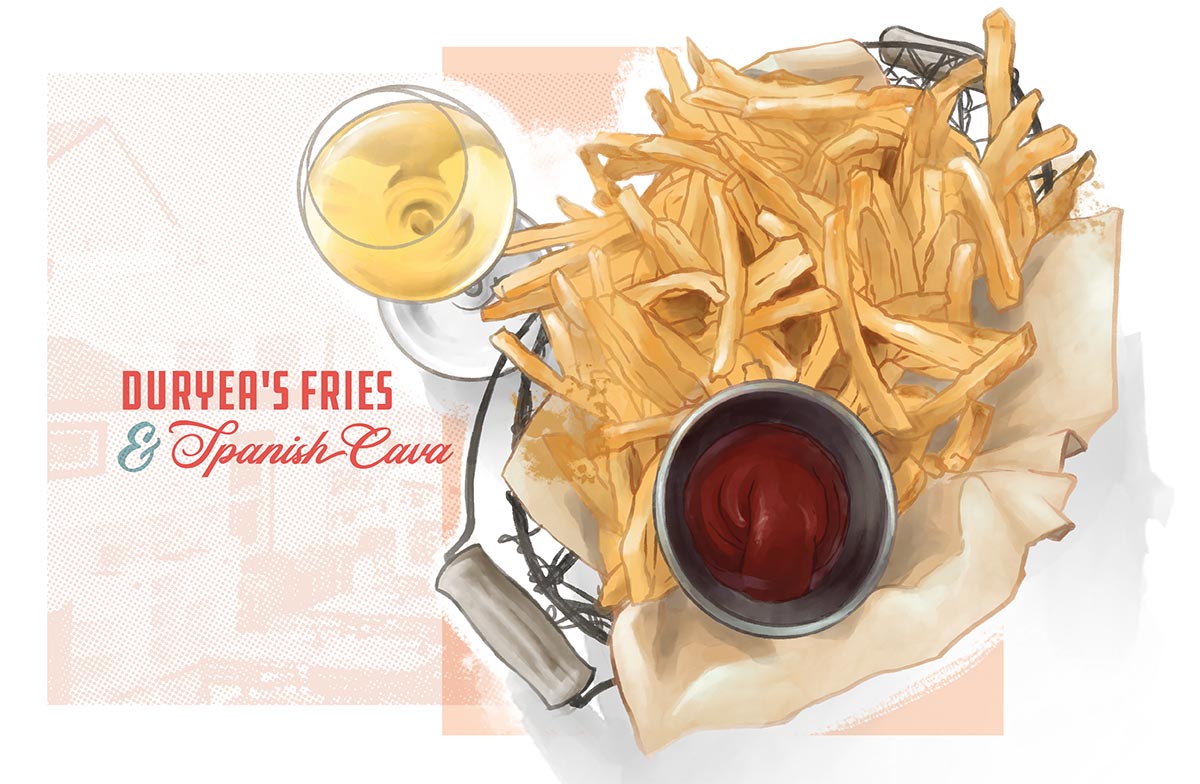
It’s often said that bubbles and french fries are a pairing worthy of a last meal. The basket of fries at Duryea’s is worth committing a crime. The grease with the acid, the bubbles with the salty fried crunch—these are life or death combinations. Cava, made in the Penedès region of Spain, stands out in the affordable end of the vital effervescence category because its second fermentation happens inside the bottle you drink it from, just like the world-famous bubbly Champagne. It’s a method of making sparkling wine that yields a finer, more integrated bubble, which is one of the crucial components for high-quality sparkling because it allows suds to stay sudsy longer.
But Cava is more than just a cheap version of Champagne. It’s its own unique sparkler, consisting of three Spanish grapes: Xarel-lo (Cha-ray-low), Parellada (Pair-ee-yada), and Macabeo (Mak-ah-bay-yo). Because the growing region is warmer than Champagne, they taste even riper than the French stuff, with all the acid. Brut Cavas offer a honeyed and earthy citrus vibrancy that makes crisp, golden fries snap to attention—and seem even crispier. Because they come from coastal areas, their natural salinity also works on fries as beautifully as a sprinkle of sea salt.

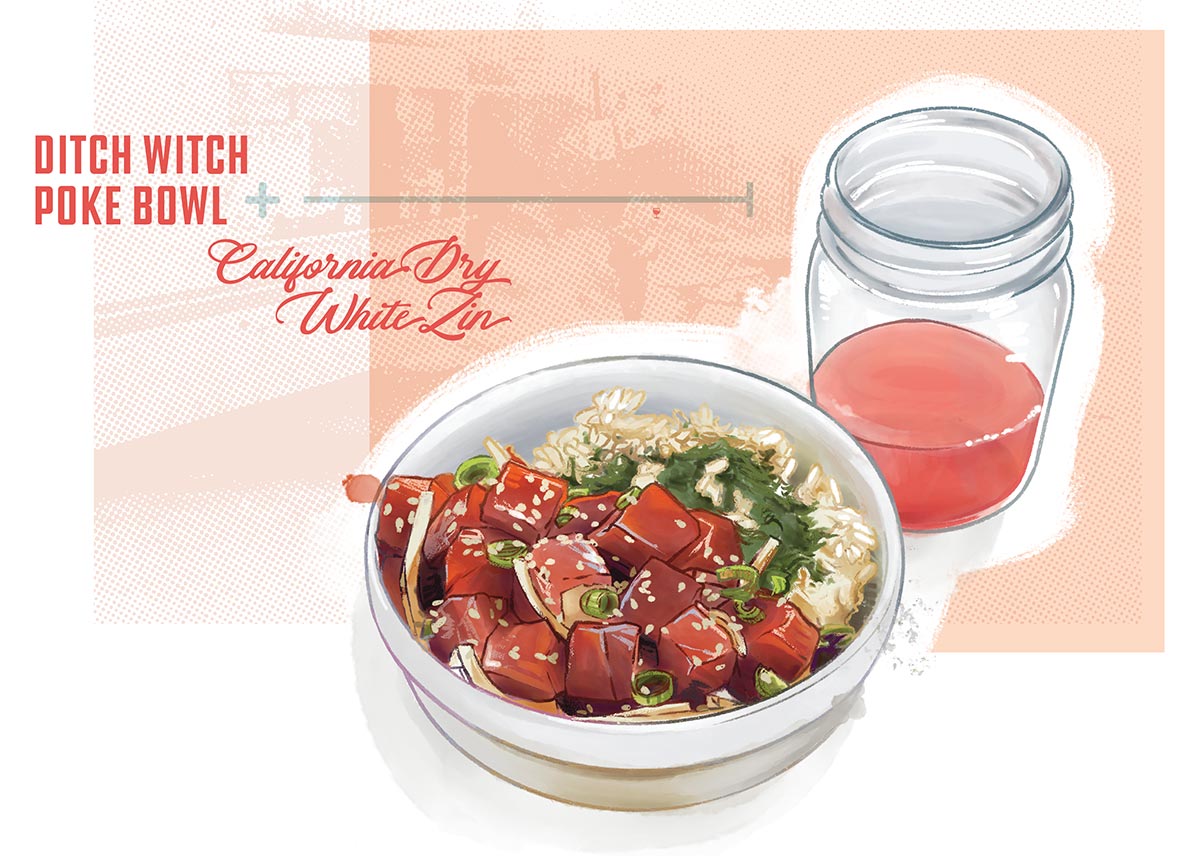
I didn’t know what a poke bowl was until I was in my 30’s. Pretty sure I thought it was a “poke” bowl and not a “po-kay” bowl for a longer time than I care to admit after that. But once I was on the fresh ahi-tuna, rice, edamame and lots and lots of avocado train (especially Ditch Witch’s take) it didn’t take long for me to figure out that this Hawaiin-originated dish is a natural for dry White Zinfandel. And before you roll your eyes, hear me out. White Zinfandel of yesteryear was bulk produced and tasted like mediocre sugar water. And yes, some of them still do, but there’s a new guard of quality producers in California who’ve resuscitated the category.
The saviors of this love-to-hate-it pink drink decided to apply the same principles the French do to produce their famous dry rosés, and it worked wonders on American Zin. They are dry—hear me when I say dry—and packed with juicy citrus, and they range in hue from fluorescent fuchsia to soft salmon. They have a mid-palate that’s bursting with every berry of the rainbow, which feels like an extension of the fleshy tuna and satisfyingly sharp ginger in your bowl. And the pleasingly tart finish dispatches with the more bitter elements of seaweed and cucumber just in time to do it all again. If you’re still in doubt, it may be of comfort to know that Bill Murray has been spotted drinking White Zin, so even if you need to do it ironically, you’re covered either way.


